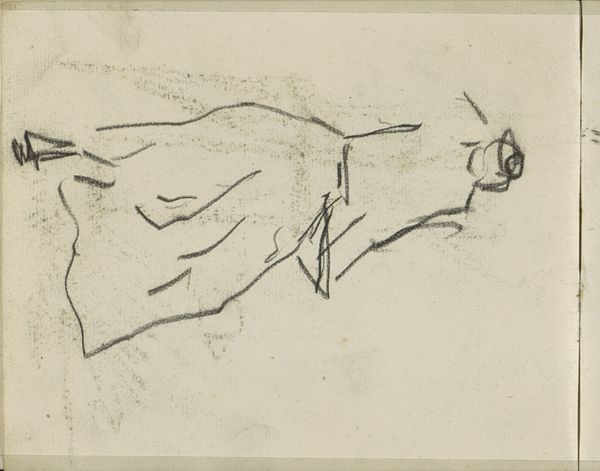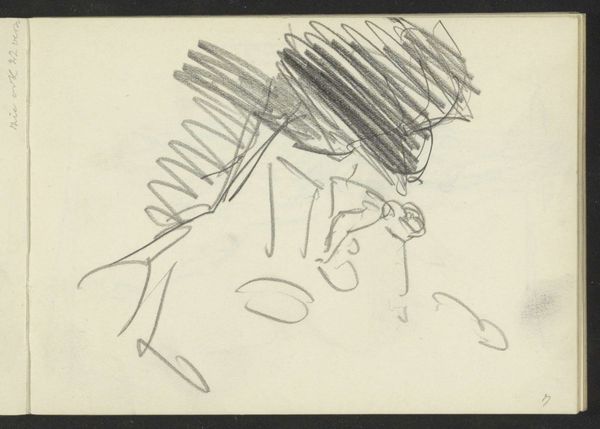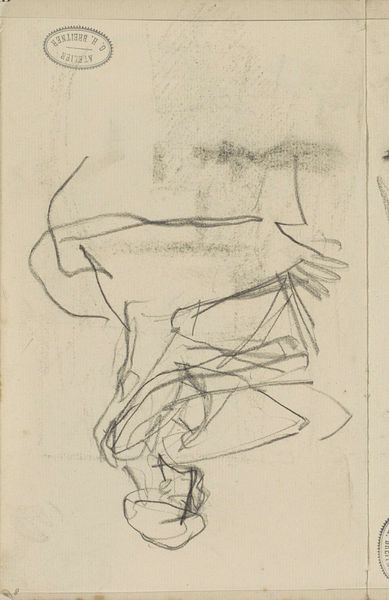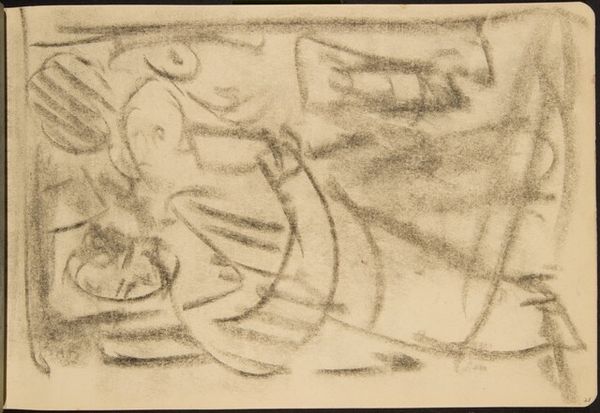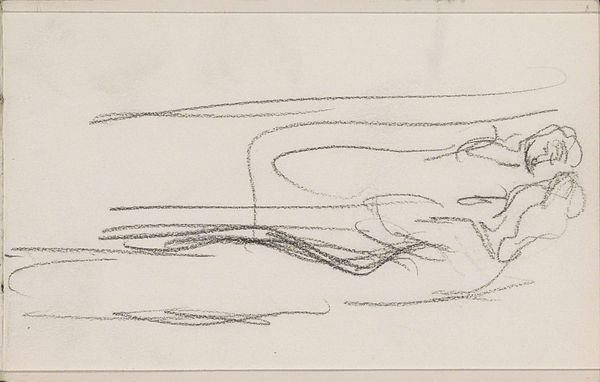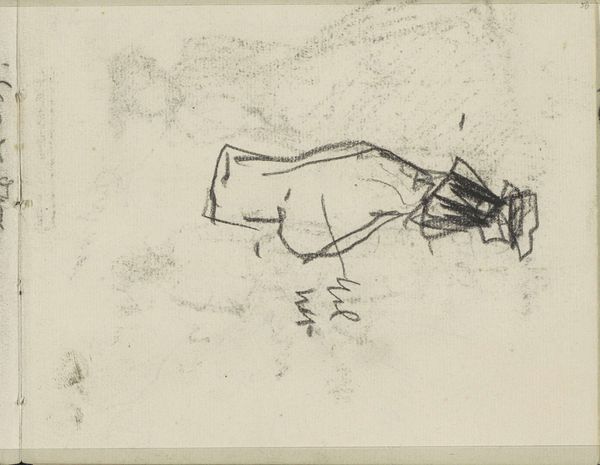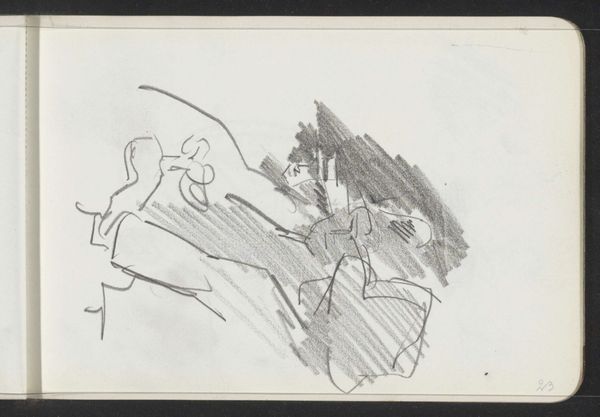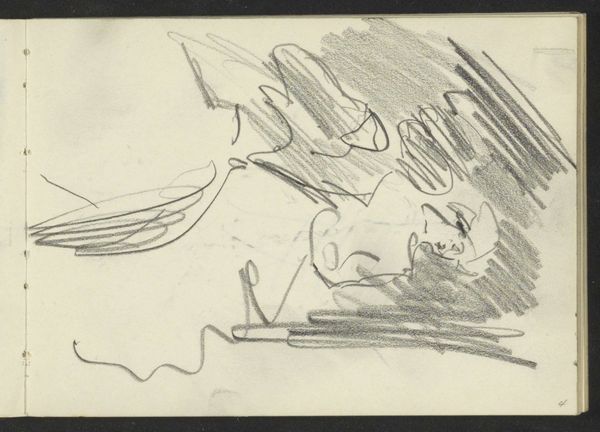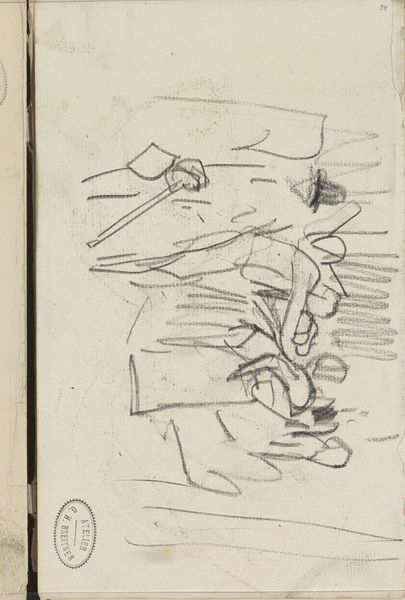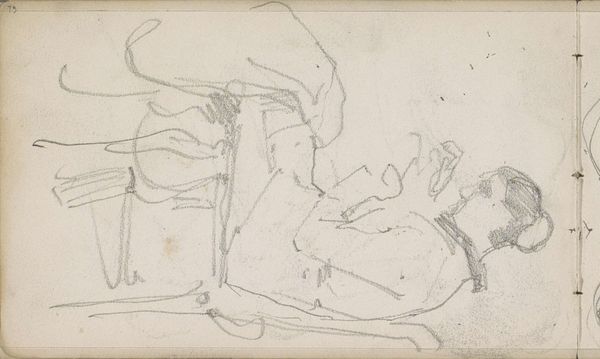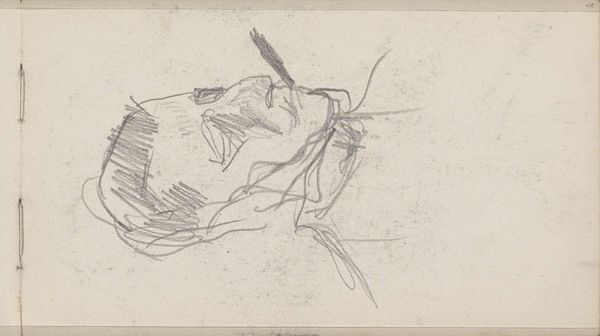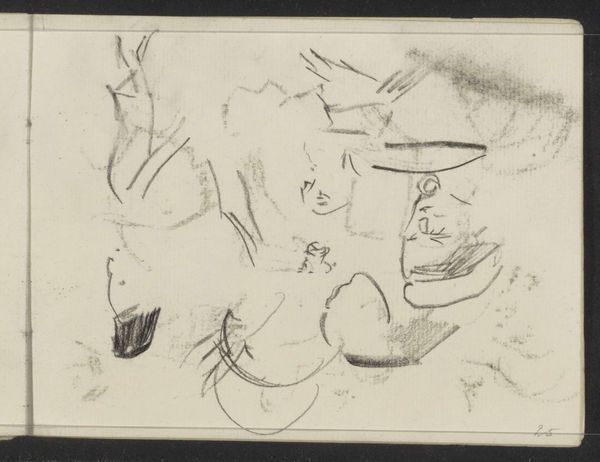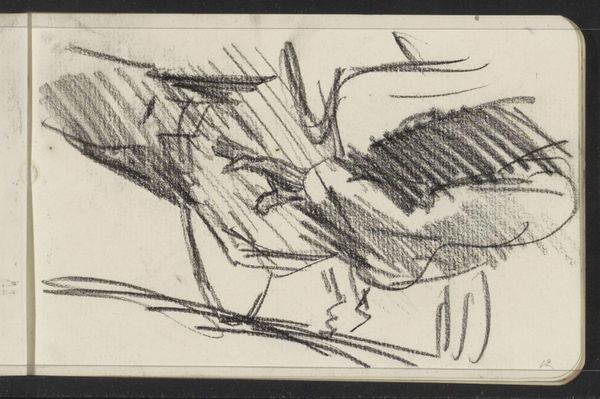
Copyright: Rijks Museum: Open Domain
Editor: Here we have Isaac Israels' "Liggende figuur," a pencil and ink drawing on paper, made sometime between 1886 and 1934. The sketch is simple, but I find the figure compelling. How do you interpret this work? Curator: What intrigues me about this piece is its incompleteness. We see the process of artistic ideation, reflecting broader cultural attitudes towards sketching during that period. Sketchbooks became increasingly valorized, offering a window into the artist’s mind. Israels, known for his impressionistic style, captured fleeting moments in daily life, but how does this relate? Editor: Well, it's intriguing how this more private process, normally hidden, can now be displayed, like an artifact in and of itself, with as much care and consideration. It humanizes the artist. Curator: Exactly! It disrupts the myth of the artistic genius, fully formed. It emphasizes the role of labour and experimentation. Think about the rise of artistic individualism during the late 19th century; how did artists begin using these sketches as proof of unique creative vision? Were these meant for the public or a means for artistic growth? Editor: That makes me see the piece in a completely new light. It's not just a simple sketch, but also evidence of artistic identity formation. So it’s a window, but also a statement. Curator: Precisely. And seeing it displayed challenges traditional notions of the 'finished' artwork. It forces us to ask, who decides what's art, and what's merely preliminary? Editor: I hadn’t considered that this drawing also invites questions about the museum as an institution and how we assign value to even the most humble sketches. Thanks for your insight! Curator: It’s a pleasure to explore these historical shifts in artistic appreciation with you.
Comments
No comments
Be the first to comment and join the conversation on the ultimate creative platform.
